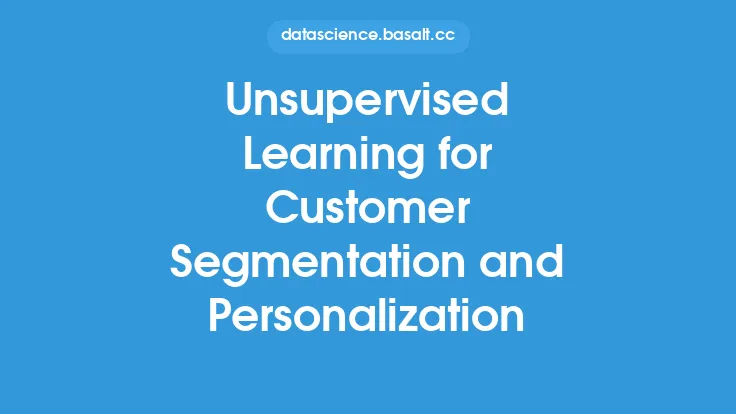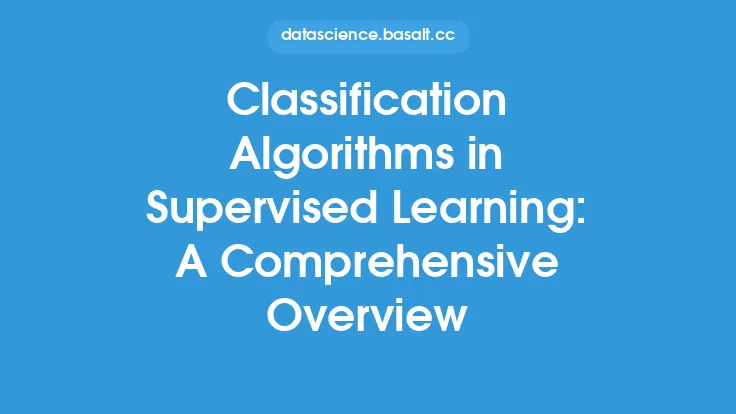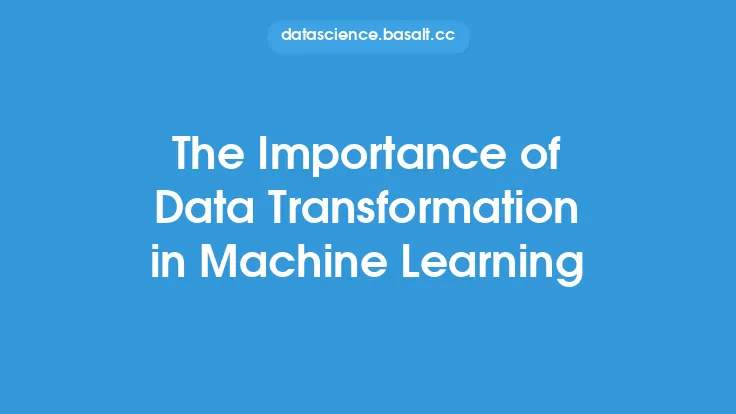Principal Component Analysis (PCA) is a widely used technique in unsupervised learning, which is a subset of machine learning. It is a dimensionality reduction method that transforms high-dimensional data into lower-dimensional data while retaining most of the information. This technique is particularly useful when dealing with large datasets that have a large number of features or variables. In this article, we will delve into the details of PCA, its applications, and its benefits.
What is Principal Component Analysis (PCA)?
PCA is a statistical procedure that uses orthogonal transformation to convert a set of correlated variables into a set of uncorrelated variables called principal components. The principal components are ordered in such a way that the first principal component explains the largest amount of variance in the data, the second principal component explains the second largest amount of variance, and so on. This transformation is done in such a way that the new variables are linear combinations of the original variables.
How Does PCA Work?
The PCA algorithm works by first standardizing the data to have a mean of zero and a variance of one. This is done to ensure that all the variables are on the same scale, which is necessary for the algorithm to work correctly. After standardization, the algorithm calculates the covariance matrix of the data, which is a matrix that summarizes the variance and covariance between each pair of variables. The algorithm then calculates the eigenvectors and eigenvalues of the covariance matrix. The eigenvectors are the directions of the new axes, and the eigenvalues are the amount of variance explained by each new axis.
Choosing the Number of Principal Components
One of the most important decisions when using PCA is choosing the number of principal components to retain. This decision is critical because retaining too few components can result in loss of information, while retaining too many components can result in overfitting. There are several methods that can be used to choose the number of principal components, including the Kaiser criterion, the broken stick method, and cross-validation. The Kaiser criterion involves retaining all components with eigenvalues greater than one, while the broken stick method involves retaining all components that explain more variance than a random component would.
Applications of PCA
PCA has a wide range of applications in machine learning and data analysis. Some of the most common applications include:
- Data visualization: PCA can be used to reduce the dimensionality of high-dimensional data, making it possible to visualize the data in a lower-dimensional space.
- Noise reduction: PCA can be used to reduce the noise in a dataset by retaining only the principal components that explain the most variance.
- Feature extraction: PCA can be used to extract features from a dataset that are relevant for a particular task, such as image classification or text classification.
- Anomaly detection: PCA can be used to detect anomalies in a dataset by identifying data points that are farthest from the mean in the principal component space.
Benefits of PCA
PCA has several benefits that make it a popular technique in machine learning and data analysis. Some of the benefits include:
- Reduced dimensionality: PCA can reduce the dimensionality of high-dimensional data, making it easier to analyze and visualize.
- Improved interpretability: PCA can improve the interpretability of a dataset by identifying the most important features and reducing the noise.
- Reduced overfitting: PCA can reduce overfitting by retaining only the most important features and reducing the dimensionality of the data.
- Fast computation: PCA is a fast and efficient algorithm that can be computed quickly even for large datasets.
Limitations of PCA
While PCA is a powerful technique, it also has some limitations. Some of the limitations include:
- Linearity: PCA is a linear technique that assumes a linear relationship between the variables. If the relationship is non-linear, PCA may not be effective.
- Assumes normality: PCA assumes that the data is normally distributed, which may not always be the case.
- Sensitive to outliers: PCA is sensitive to outliers, which can affect the results.
Real-World Examples of PCA
PCA has been used in a wide range of real-world applications, including:
- Image compression: PCA has been used to compress images by reducing the dimensionality of the pixel data.
- Text classification: PCA has been used to extract features from text data that are relevant for classification tasks.
- Gene expression analysis: PCA has been used to analyze gene expression data and identify patterns and relationships between genes.
- Customer segmentation: PCA has been used to segment customers based on their demographic and behavioral characteristics.
Conclusion
In conclusion, PCA is a powerful technique in unsupervised learning that can be used to reduce the dimensionality of high-dimensional data, improve interpretability, and reduce overfitting. While it has some limitations, PCA is a widely used technique in machine learning and data analysis, and its applications continue to grow. By understanding the principles and applications of PCA, data analysts and machine learning practitioners can unlock the full potential of their data and gain valuable insights that can inform business decisions and drive innovation.





